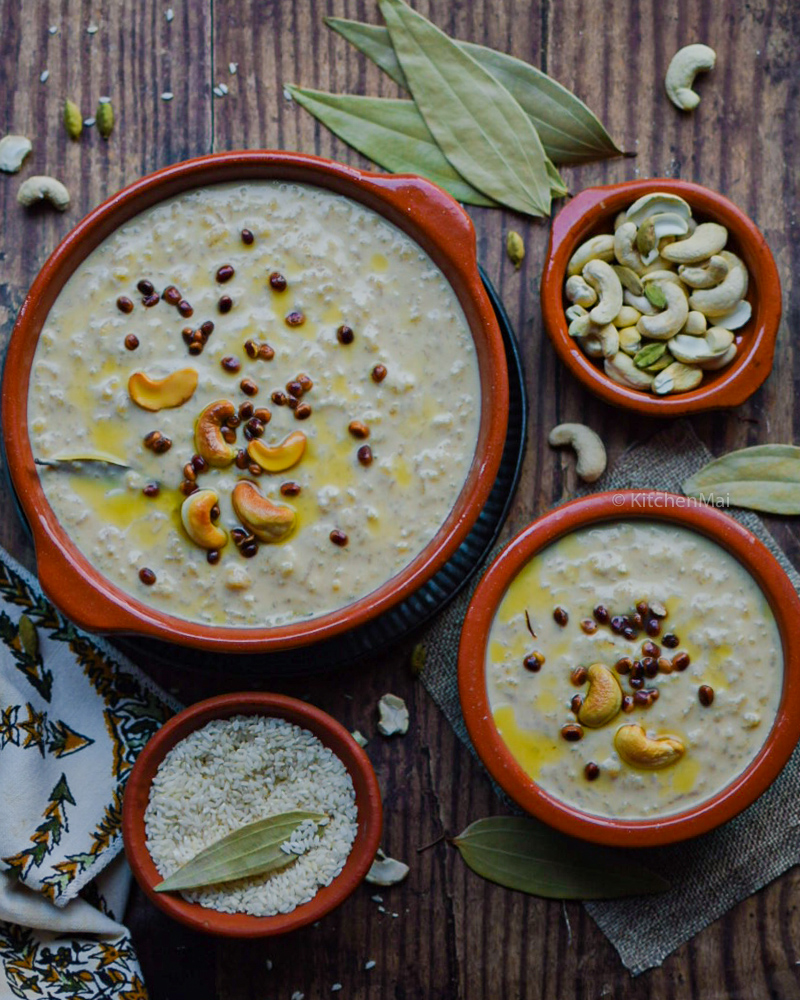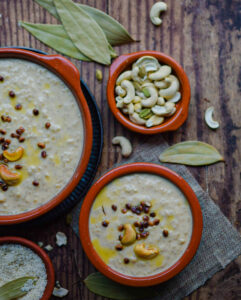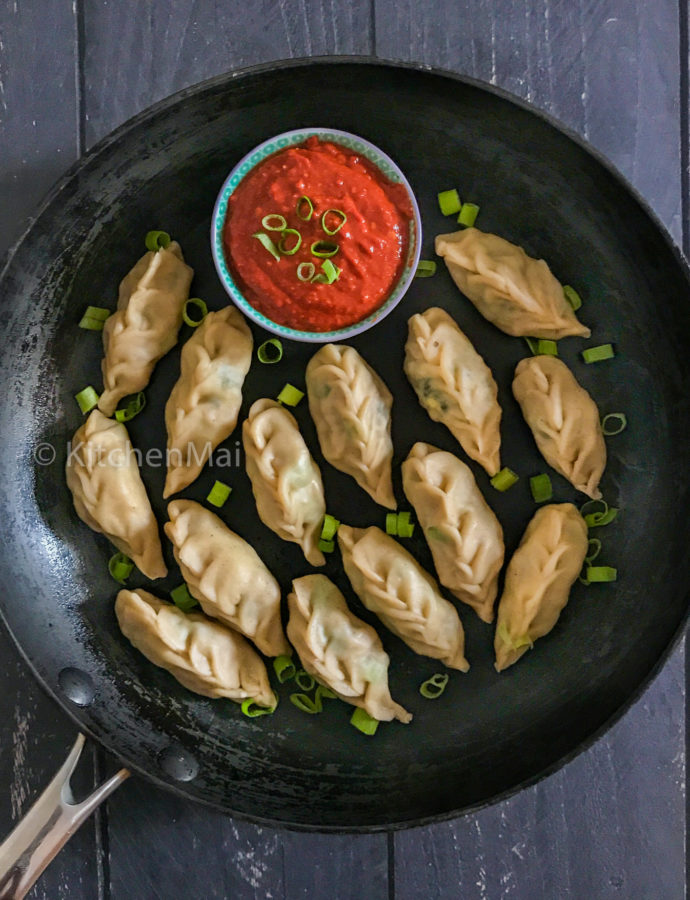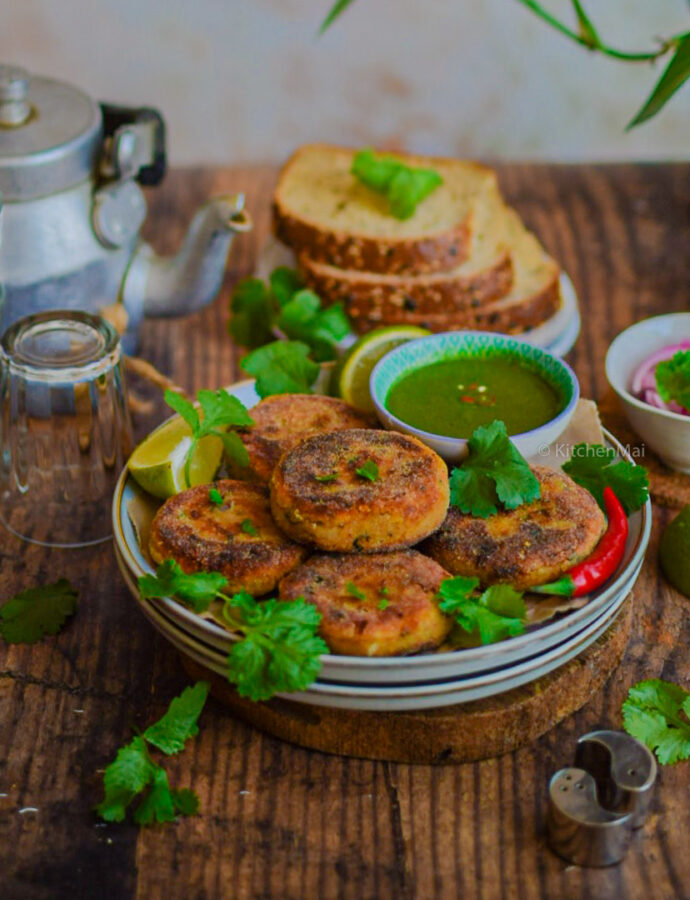A winter delight, this Bengali rice pudding, is sweetened with the very special, seasonal nolen gur or date palm jaggery, cooked in whole milk and topped with fried cashews. Divinity is this!

Come winters and you will see how excited every Bengali is. After all it is the season to stock up on our stashes of our beloved nolen gur or date palm jaggery. Winter also brings with it a host of fresh produce and among it is also this jaggery (gur). This deep brown colored gur is made from the sap of date trees, that is tapped in the colder months. What makes this seasonal ingredient special and very different from cane jaggery is it’s unique taste (even color). Not just sweet, but the nolen gur has a deep, caramel like flavor to it. And that is what makes every sweet and dessert made out of it taste so fabulous. And being the true Bengali that I am, I got my share of the gur and made my mother’s nolen gurer payesh recipe.
To be fair, this is a recipe that is not just maa’s. This payesh recipe has been in the family for generations. In fact, there hasn’t been a single alteration that anybody has made to this age old recipe at all. After all, this three ingredient recipe is perfect as it is. Even my thakurma’s (paternal grandmother’s) recipe is the same. Hence, my recipe of this delectable rice pudding is just the way I have always eaten it. The only change that I take the liberty of making here is by not adding any raisins to the nolen gurer payesh. While the cashews definitely feature in my payesh too, the raisins are absent. I am not a fan of it so I have replaced them with charoli.
You may also like,
Nolen gurer rosogolla (rasgulla)
Kheer komola (Bengali orange kheer)
Sheer khurma (vermicelli and milk pudding)
Caramel bhapa mishti doi (baked sweetened yoghurt)
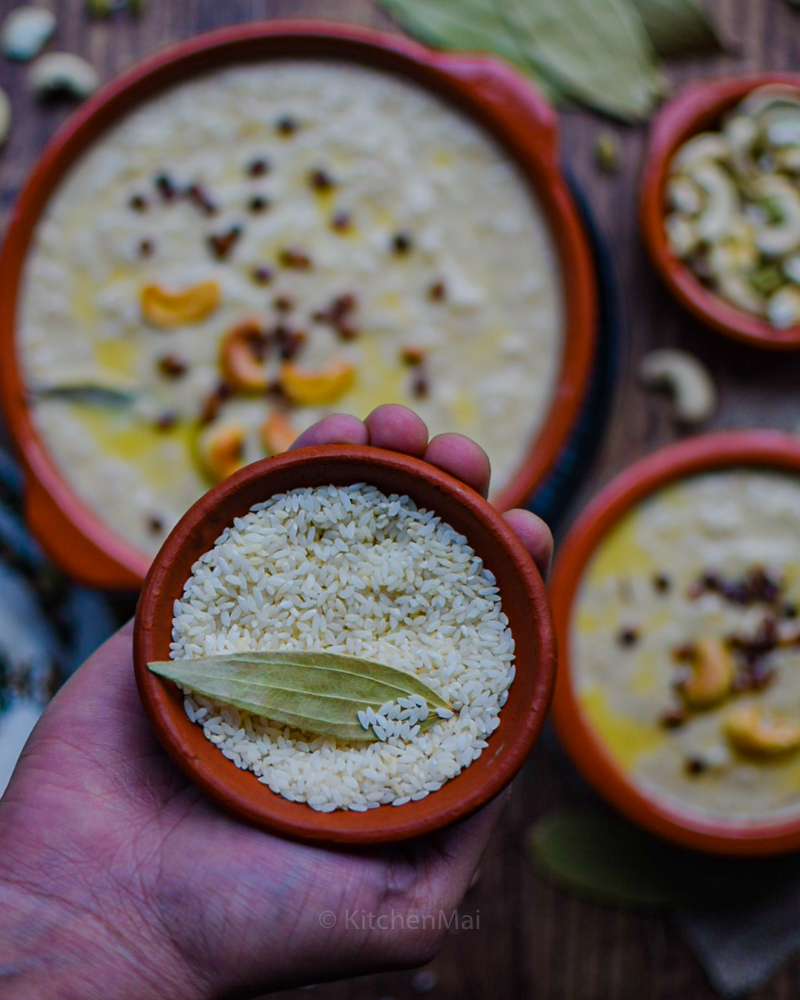
Tips & tricks for a creamy payesh
Rice puddings are called payesh in Bengali. While they are normally sweetened with sugar, it is only in the winters that you get to taste the amazing nolen gurer payesh. This three ingredient recipe is a fairly easy one, however, there are a few things to keep in mind to make the best payesh. Here they are:
- Traditionally the Bengali payesh is made using gobindobhog chaal (rice) which is a short grain variety that has a beautiful fragrance and a creamy texture. However, for my recipe here, I have used a South Indian variety called the jeeraga samba rice. The later too has similar properties as that of gobindobhog, hence makes for a great substitute. Make sure that you use either of these varieties and not any long grain ones
- Also, make sure to wash the rice two to three times before using it and then keep it soaked in water for 10-15 minutes. But do not over do it. After all, we do not want to wash away the starch from the grains. Even that plays a key role in making the pudding yummy and creamy
- Always use whole or full fat milk to make the creamiest payesh. As the milk reduces and thickens, during the cooking process, the creamier it gets. And that is exactly the texture that you are aiming for your delicious rice pudding
- It is imperative that you cook the milk and rice mixture over medium-low to medium heat. Too much heat and your milk and rice will start sticking to the bottom of your pan. I’d also recommend using a thick bottomed sauce pan for the recipe
- Patience is the key in this recipe. You will need to stand by your saucepan, keep an eye on your payesh and keep stirring it and scrapping the sides intermittently. Be sure to scrape from the bottom of your pan too, so as to not let the pudding stick and burn. If burnt, the flavour of the payesh could become unsavory, which isn’t desirable
- Always add the gur right at the end when the milk has thickened, reduced to half and the grains of rice are completely cooked, with the heat turned off. This is extremely crucial since, a lot of times the gur can have impurities in it that could cause the milk to split, if added when cooking. So, always bear in mind to add the jaggery once the rice pudding is off the flame
Serving suggestions
With these few, yet important pointers in mind, you are sure to make the most yummy Bengali rice pudding this winter. This payesh is best served chilled. Nonetheless, I know of a lot of people who enjoy this at room temperature too. So, it is going to be totally up to you, regarding how you’d like to enjoy it. If it is going to be your first time making this dessert, then I assure you, it won’t be the last! You are going to crave for it every winter, just like we Bengalis do. Out of all Bengali nolen gur recipes, making this rice kheer is the easiest. So, if you can lay your hands on this gem of a winter ingredient, do try my recipe out. And I promise, you are going to be making it every year!
You can share your food pictures with me over on Instagram. Additionally, you can also share your feedback in the comments below. I’d truly love to hear from you.
Eat hearty!
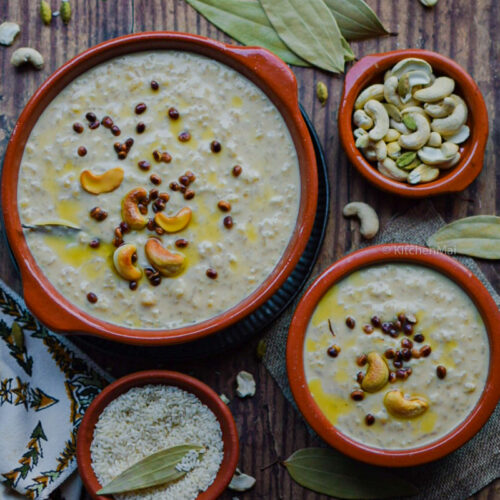
Nolen gurer payesh
Equipment
- Sauce pan
Ingredients
- 1 l whole (full fat) milk
- 60g gobindo bhog or jeera samba rice washed and soaked in water for 10 minutes
- ¾ cup nolen gur or to taste
- 1 bay leaf optional
- 1 tbsp ghee
Garnish (optional)
- 8-10 cashews
- 2 tbsp charoli seeds or raisins
- 2 tbsp ghee
Instructions
- Drain the rice and rub it well with the ghee. Transfer this to a sauce pan and pour the milk and add the bay leaf, mix and set it to cook over medium flame
- When the milk comes to a full boil, stir and lower the flame. Continue stirring, scraping the cream from the sides and cooking until the milk thickens and reduces to half (took me about 45 minutes)
- By this time the rice too should have cooked, remove the saucepan from the heat and add in the nolen gur. Give the payesh a gentle but a through mix, cover and set aside for 15-20 minutes to the flavors to deepen
- In a small frying pan, heat the ghee. once it melts, add the cashews and charoli seeds (or raisins). Fry until golden brown in colour and set aside
- Serve your creamy and delicious nolen gurer payesh, garnished with the cashews and charolis, chilled or at room temperature and enjoy a wonderful seasonal, Bengali dessert

Notes
- Remember to keep scraping the sauce pan while cooking the milk. Incorporating the cream and cooking it further, leads to a creamier payesh
- While gobindo bhog rice is traditionally used for this Bengali recipe, jeeraga samba or kalijeera rice varieties also work well
- Instead of frying the cashew and raisins, you could keep them soaked in water for about 10 minutes and cook it along with the rice, in your payesh
- It is imperative that you add the gur only when the heat is off. Impurities in the date palm jaggery could cause the milk to split, hence it is best added later
- *Only remove the payesh from the heat once the rice is cooked
- l - litre
- tbsp - tablespoon
- 1 cup = 250 millilitres
